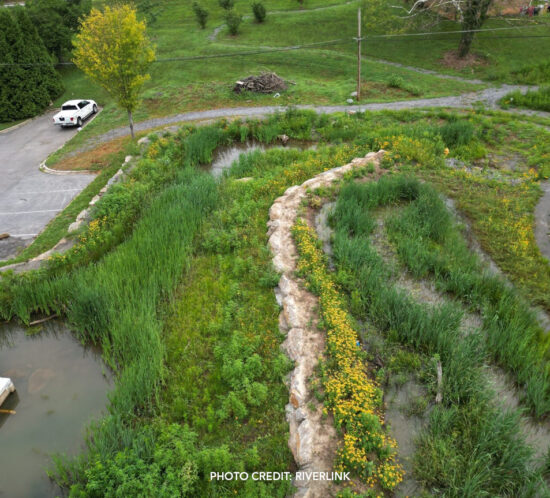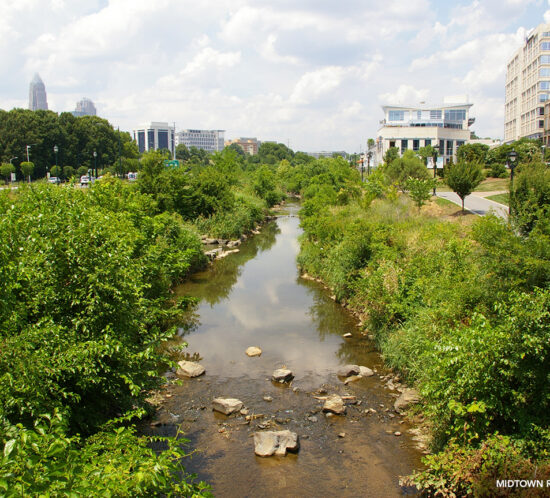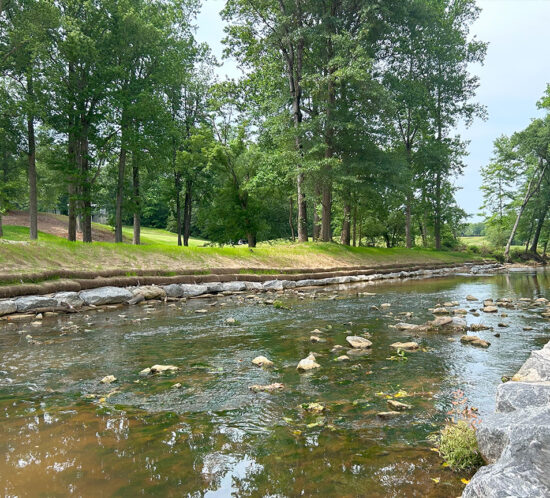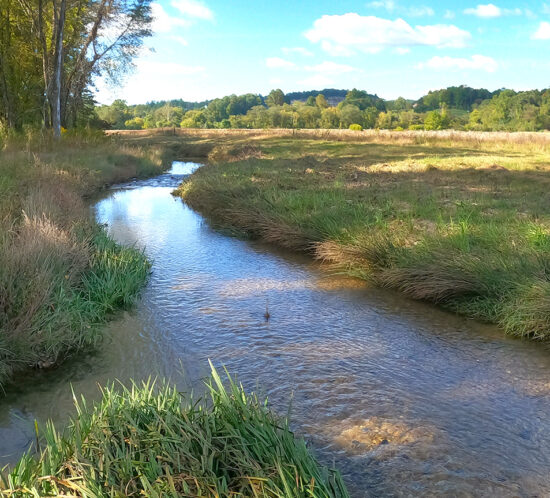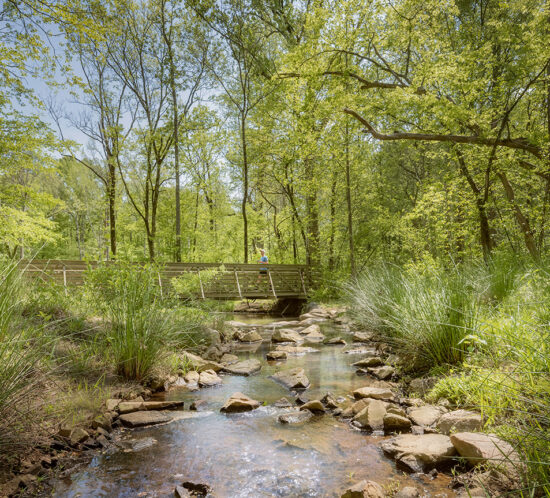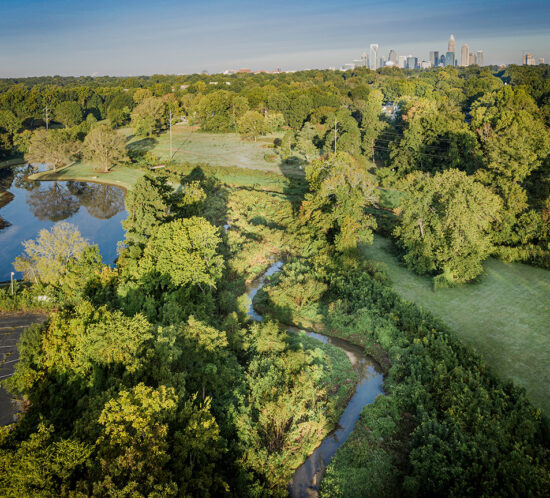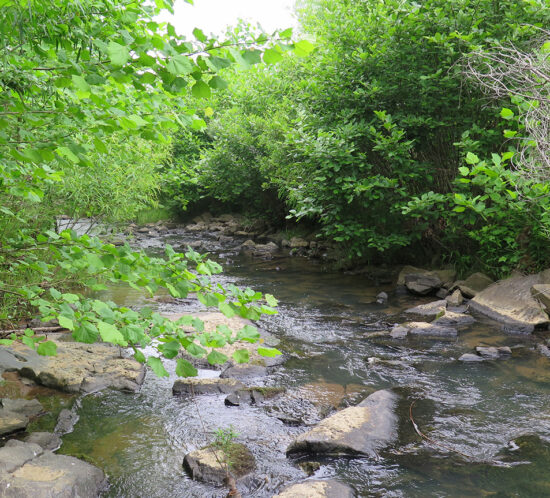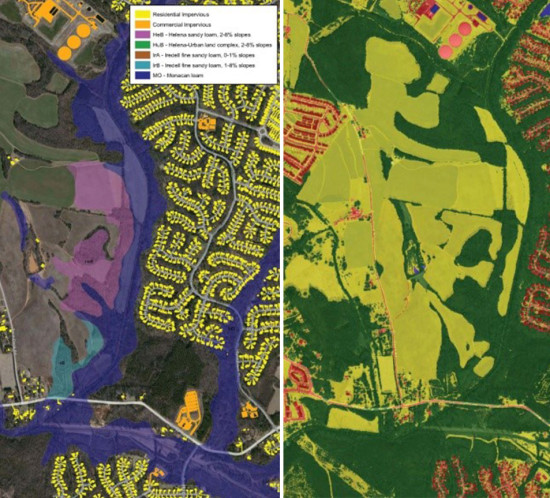Southside Stormwater Improvements Project
Client: RiverLink
Location: Asheville, NC
The Southside Stormwater Improvement Project was identified through the Central Asheville Watershed Restoration Plan that Wildlands developed for RiverLink as an area in need of stormwater improvements. Among the many projects identified in this Plan, this project stood out for its need of creating a more functional space, safe environment, and resilient infrastructure at the Erskine Apartments.
After further evaluation of the site and its contributing drainage and infrastructure, a multifaceted project was proposed to address multiple community needs as well as provide stormwater management to improve water quality in Nasty Branch. In addition to the drainage issue, concrete stormwater swales and corrugated metal pipe systems from the original apartment construction in 1969 were failing, a powerline behind residences was very low to the ground creating an unsafe feeling environment, and areas of dense invasive vegetation created unusable spaces and consumed native trees and vegetation. Discussions with community leaders, meetings in the park, and door to door efforts lead to a list of community needs and desires that were assembled into a cohesive improvement plan to address as many considerations as possible.
Wildlands helped prepare technical information for grants to fund the project. Multiple entities contributed funding to the project including the apartment owner, the Asheville Housing Authority. The project used stormwater control measures called regenerative stormwater conveyance (RSC) channels to replace pipe and concrete ditches. These incorporate sand-based media to provide additional water quality treatment. Rain gardens and a stormwater wetland were implemented to capture parking lot and rooftop runoff; a french drain routed subsurface flow into the stormwater system to resolve road seepage; a power line relocation addressed the low overhead line; and trails and sitting areas for contemplation and to honor lost loved ones were incorporated into the project. The paths and a bridge over the RSC channel connect kids and community members to the nearby park, community center, school bus stops, and other nearby destinations.



